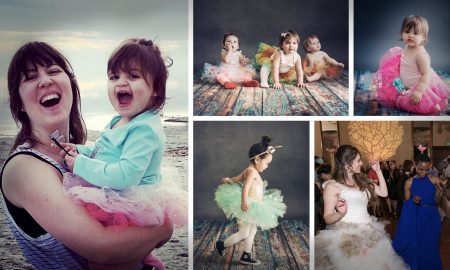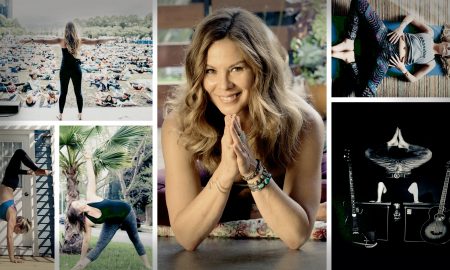

Today we’d like to introduce you to Rish and Kanish.
The easiest thing about working together, for us, is that we’ve had many years of experience to work out all the kinks. We are brothers–Rish is 22 months younger than Kanish (our mom always says 22 months, never two years, because it seems much closer). A lifetime of brotherhood means a lifetime of practicing the tenets of a good working relationship: a mutual respect for each other’s skills, an understanding of each other’s working habits, and even a respect for each other’s space. Because of this relationship, which has been shaped and honed over decades, there are no more fights. No, really. There are disagreements, but always in pursuit of some greater idea. Our relationship, clad in irons twenty years forged, is the unbreakable foundation of our professional co-existence.
It wasn’t always this way, though. When we grew up, we fought, as all siblings do–sometimes the fights would be so vicious that our mom would have to physically separate us. In some parallel universe, perhaps our adult relationship would have been soured by these fights. Maybe in that universe, we would have settled into a tepid chain of holiday phone calls and check-ins during major life events. But thankfully, in our universe, we teamed up in high school to do speech and debate.
We participated in an event called Duo Interpretation, where partners would have to cut down a book, play, or movie script into a ten minute performance, complete with blocking and a full range of characters, all while keeping a solid story intact. It was sort of like competitive theater, and under the umbrella of “speech and debate,” it was certainly a more parentally-acceptable avenue for Asian-Americans to explore our interest in the arts. Through Duo Interpretation–“Duo,” for short–we began to refine our storytelling fundamentals; our understanding of character arcs, plot structure, and dramatic tension all developed in the two short years that we were partners together. And more importantly, our diverging energies were refocused toward a singular goal–victory. Our petty conflicts were eventually stripped away–ballast to be cast aside as we ran a three-legged race for glory. After Kanish graduated, Rish went on to become one of the best and most accomplished speakers in the history of our high school. Kanish wrote that sentence, and Rish will try to delete it, but Kanish insists that it’s important to Rish’s character arc, so it should stay, lol.
Then Kanish went to college, and a great change emerged: we were separated for the first time. Kanish explored pre-med for a while at UC Berkeley, as Rish, whose interest in film had already been blossoming for many years–to the chagrin of many an Indian relative–pursued a degree in the Business of Cinematic Arts (BCA) at USC. Rish would tell Kanish about some of his classes–about how film could be studied in an academic context–until Kanish eventually switched into Berkeley’s film major in his senior year, just in time to complete it without delaying graduation. Amidst that transition, Kanish also tried his hand at stand up comedy a couple of times while still a student.
After college, Kanish moved to Los Angeles, and we started doing stand up comedy together. We were lucky enough to sign with a theatrical agent only a week after Kanish moved to LA. Unfortunately, the roles available to us in auditions were dismal–vaguely Indian or “any ethnicity” loser characters, whose main purpose was to make some white douche hero look even more heroic while he saved his “any ethnicity” female love interest. We found these roles repulsive and these auditions demeaning, so we began writing our own material.
Having spent four years doggedly creating our own work, which consistently centers the perspectives of people of color like us, we now sit on what we consider to be a trove of original content. We believe we are on the precipice of our “big break” (whatever form that takes), and we feel strongly that our stories are as yet unheard across the landscape of entertainment. We know that, when our voices carry, people will turn their heads and listen to what we have to say. That vision may be rose-tinted, but if we don’t assert that what we have is special, then who else will?
We’re always bombarded by how great it is to pursue your passion, etc – but we’ve spoken with enough people to know that it’s not always easy. Overall, would you say things have been easy for you?
Candidly, the biggest challenge that we face is the unfathomable whiteness of the entertainment industry (among many spaces). Even peer-reviewed, data-driven analyses cannot cast the vastness of the shadow of whiteness in sharp relief, to say nothing of the softball think-pieces published in various entertainment publications.
Whiteness in entertainment is more than a mere numerical imbalance. Truly, whiteness is a sprawling network of slithering roots that snake out from under and support a concrete structure that has stood resolutely, for over one hundred years of filmed entertainment. It is a ghost that persistently reanimates a centenary corpse, dragging it to photo-ops around Los Angeles as its hair falls out and its skin sloughs off.
It’s not just that roles for actors are overwhelmingly white. Writers are white. Directors are white. Producers are white. Executives are white. Casting directors are white. Agents are white. Editors and Foley artists and makeup artists and gaffers and countless other entertainment professions are disproportionately consumed by whiteness. If one–say, a visitor from another planet, or perhaps, a non-white immigrant–were to sample randomly from the full history of American film and use this sampling to inform their understanding of the world at large, then this individual could conceivably come to the conclusion that whites are the only ones who have ever existed at all. “Relax, it was the 80’s! We weren’t talking about representation back then,” some erasure apologists say. But that isn’t acceptable to us. The hegemony apparent in this industry’s library of output cannot simply be written off as anachronistic ignorance. That library was consciously curated, and it has spawned a system that remains meticulously, stealthily, deliberately exclusionary.
This presents a challenge for us as non-white writers, because the entertainment industry, like a towering organism constructed of hundreds of billions of identical units, has great difficulty understanding even a single unit that is different from the amalgam of innumerable building blocks of its own construction. White stories in Hollywood are accepted as instantly castable, instantly marketable, instantly bankable. White is perceived as “default,” while anything else is, at its most basic, seen as “other,” sometimes even inside communities of color. When whites in entertainment say “diversity is great,” they do not acknowledge this tacit categorization of “diverse” stories as different from the norm. They announce proudly that they are intentionally diverting from the mainstream, and therefore, silently painting the still-searing brand of “other” with bright red paint. And so, the mainstream never seems to change.
This struggle is exacerbated by the fact that the stories about non-white people that penetrate the zeitgeist (read: the white-geist) must be palatable to white audiences. If one dares to tell a story that does not center the white viewer, or, more boldly, criticizes the white-geist and its aggressive marginalization of non-white voices, it is much more difficult for that individual to sell that story. This endeavor is like trying to convince the ocean that it is crushing the seafloor.
However, the tides are changing. Great strides have been made by our predecessors–people of color who have told their stories in defiance of the abyssal pressures they swam against. We remember these individuals, even those whose voices never carried, who may never have made any waves at all. Their efforts charted the waters and tamed the currents, and have allowed us, a new crop of non-white artists, to rise. And, like mountains, we will pierce the water and scrape the clouds, so that generations of artists to come may spring from atop our shoulders and fly.
Please tell us about Junghal Studios.
We are the founders of Junghal Studios, a production company with a singular vision: to tell stories about people of color. Our company is still in its early years, but our resolve is unflappable and our mission is unwavering. Too many executives we have already encountered seem to share an outward ravenousness for “new voices,” but inevitably produce the same white stories about the same white characters, with a smattering of auxiliary non-whites occasionally thrown in for flavor, like paprika. We are confident that Junghal’s history, to be written, will reflect our commitment to championing non-white voices, and magnifying stories that truly have never been told.
Has luck played a meaningful role in your life and business?
We have enjoyed plenty of luck during only these first few chapters of our lives. We are both non-disabled men who grew up in a financially-stable household in California, each with a strong and supportive friend group and two parents who, although separated, love us dearly. The privileges of our circumstances are not lost on us, and we feel it is imperative that we do not waste our opportunity–not only to make our mark on the world but to help others do so as well. Luck is a fickle patron, but we are active in our efforts to lift up those who may not have access to the opportunities that we did. In fact, if we concluded our careers without having helped anyone at all, it would be plain to see that we would have lived lives wasted.
Contact Info:
- Website: rishandkanish.com





Image Credit:
Chris Cazares
Suggest a story: VoyageLA is built on recommendations from the community; it’s how we uncover hidden gems, so if you or someone you know deserves recognition please let us know here.



















